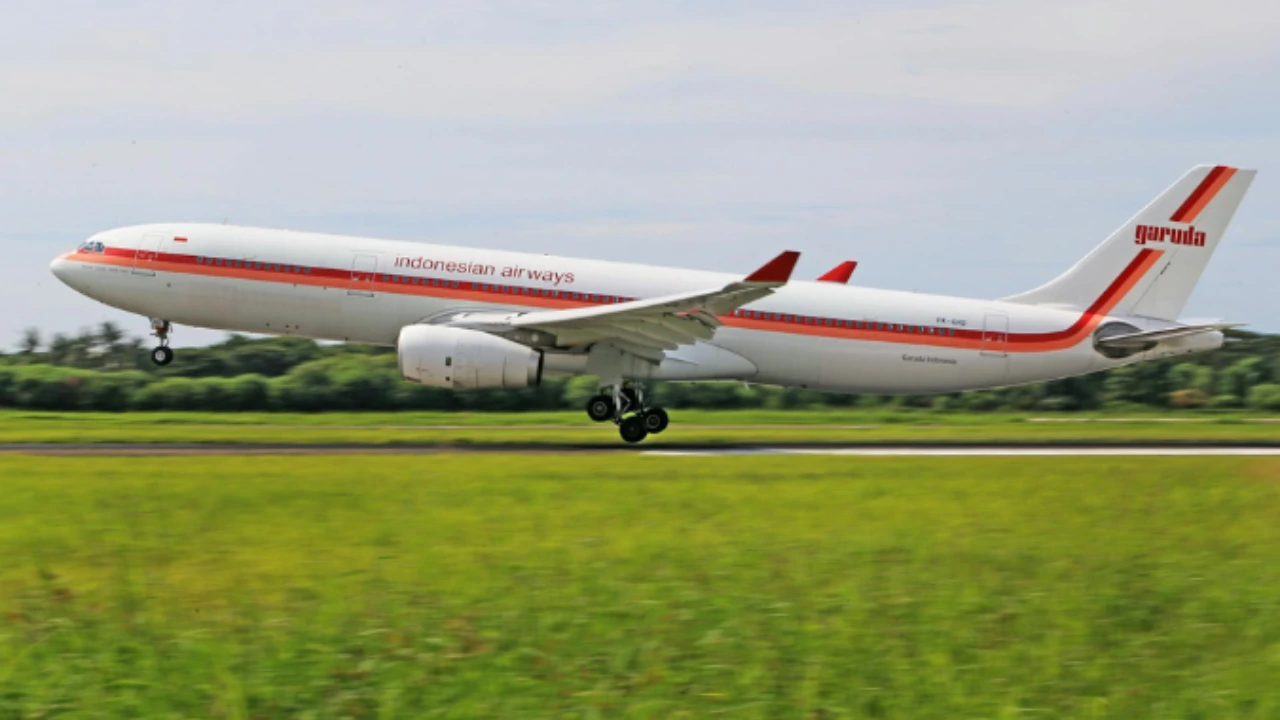Air Travel Reinvented: How Sustainability, AI, and Smart Mobility Are Shaping the Future of Flight


Air travel remains a marvel of modern life-linking continents, cultures, and economies. Yet, as passenger expectations grow, running costs rise, and environmental pressures intensify, the aviation industry is undergoing a profound transformation. Airlines, manufacturers, airports, and tech innovators are deploying breakthrough solutions from eco-friendly aircraft and sustainable fuels to AI-driven services and urban air taxis to redefine what flying means in the 21st century.
Below, we explore the revolutionary trends transforming air travel: sustainability in green aviation, personalized AI services, biometric airport experiences, autonomous systems, cybersecurity, and the ascent of urban air mobility. Combining rigorous research and real-world case studies, this guide demonstrates how new technologies aren’t just conceptually they’re already reshaping how we fly.
1. Sustainability and Green Aviation: Toward Carbon-Neutral Skies
1.1 SAF: The Near-Term Answer to Aviation Emissions
With aviation responsible for about 2–3 % of global CO₂ emissions, reducing its climate impact is urgent. The adoption of Sustainable Aviation Fuel (SAF), derived from biomass like used cooking oils, forestry waste, and non-food crops is the most immediate solution. SAF can lower lifecycle carbon emissions by up to 80–90 %, and when blended up to 50 %, it can be used without modifying existing planes or fueling infrastructure (carbonclick.com).
In June 2024, a joint Airbus–Rolls Royce–DLR study tested a commercial A350 flying on 100 % SAF and found a striking 56 % reduction in soot particle emissions and a 26 % drop in contrail climate effects, significantly diminishing aviation’s non-CO₂ warming impact (Neste). These results prove SAF isn't just a token green choice, it genuinely shrinks aviation’s environmental footprint.
However, production remains limited. As of 2024, SAF comprised only about 0.3–0.7 % of global jet fuel approximately 1.9 billion liters, far from the 449 billion liters needed annually by 2050 (sia-partners.com). The road to widespread use requires solving:
- Feedstock limits: Many SAF sources compete with food, possible deforestation, and biodiversity loss unless waste or algae is used (Reddit, Air Cargo News).
- Cost premiums: SAF currently costs 2–5 times more than fossil-based jet fuel, posing economic challenges (AirlineCrewDiscount).
- Production scaling: Large-scale facilities like Summit’s ethanol-to-jet plant (Texas) and Charters Towers in Australia show promise, but significant policy support is required (Reddit).
To push SAF forward, governments are mandating usage, e.g., the UK initially requires 2 % SAF in 2025, scaling to 22 % by 2040 (Reddit). The EU’s targeted 6 % by 2030 and 70 % by 2050 highlight the urgency, though penalties and incentives will be key to real progress

1.2 Electric Planes and Hydrogen: Long-Term Climate Goals
For now, SAF bridges the environmental gap while the industry develops electric and hydrogen-powered aircraft. Companies like Zero Avia and Airbus are advancing hydrogen-fueled aircraft prototypes, which produce zero emissions mid-flight . Electric aircraft like the Eviation Alice are entering prototype phases for short-haul routes.
Despite promise, these technologies face hurdles: battery energy density, hydrogen storage weight, certification processes and so electricity and hydrogen aircraft likely won’t dominate before the 2030s.
1.3 Lightweight Materials & Aerodynamic Designs
Another silent sustainability boom comes from material science. Using carbon-fiber composites and blended-wing-body designs reduces weight, improves aerodynamics, and cuts fuel usage. United Airlines recently funded Jezero’s blended-wing aircraft, which could reduce per-passenger fuel use by 50 % (The Wall Street Journal).
2. Passenger Experience: AI, Biometrics, Connectivity
2.1 AI-Powered Personalization
Passengers now expect highly customized experiences, from seat suggestions to meal preferences. Airlines are deploying AI and machine-learning platforms that analyze traveler data and predict preferences, prompting tailored offers and services.
Chatbots and virtual assistants have become integral, offering real-time assistance with itinerary updates, baggage tracking, and flight disruptions. This “concierge-level” service reduces stress and elevates satisfaction.
2.2 Biometric Airports: Touchless Travel
Biometric tech facial recognition, fingerprint scans, even iris scanning makes travel faster and safer. Airports like Singapore Changi and Atlanta Hartsfield–Jackson have deployed touchless systems for check-in, security, and boarding, reducing wait times and physical contact .
By linking a traveler’s passport, boarding pass, and gate-in biometric profile, airlines streamline verification flows while enhancing security without traditional lines.
2.3 High-Speed Connectivity & VR/AR Entertainment
High-speed satellite Wi‑Fi is rapidly becoming standard, enabling streaming, remote work, and live communication at altitude. Airlines are also experimenting with VR and AR entertainment, offering immersive experiences like virtual window views, games, and sightseeing simulations, all designed to transform mid-flight time into memorable moments.
3. Airport Innovation: Automation, Smart Systems, Robotics
3.1 Autonomous Ground Operations
From baggage carts to aircraft tugs, autonomous vehicles are easing ground crew workloads. Heathrow has trialed self-driving shuttles for terminal transfers, while drone-based runway inspections are increasing safety and reducing costs .
3.2 Smart Airport Systems
Modern airports are becoming smart ecosystems, powered by the Internet of Things (IoT). Sensors track crowd flows, optimize ventilation, and monitor environmental conditions while predictive analytics forecasts passenger volume to manage staffing and queues .
3.3 Service Robots
At terminals worldwide, robotic assistants like LG's CLOi GuideBot and SoftBank’s Pepper greet travelers, provide directions, and even offer language support. These bots improve efficiency and create futuristic, engaging airport experiences .
4. Urban Air Mobility: eVTOLs and Air Taxis
4.1 eVTOL Aircraft Takeoff
Perhaps the most visible vision of future flight lies in electric vertical takeoff and landing (eVTOL) air taxis. Designed for short urban runs, companies like Joby Aviation, Lilium, Archer, and Volocopter aim to begin commercial services by 2025–2027 (the-sun.com). These silent, emission-free craft could transform urban mobility.
4.2 Urban Hubs and Congestion Relief
Cities like Los Angeles and Dubai plan specialized vertiports, compact hubs that can dock eVTOLs multiple times daily, helping shift traffic from roads to skies and delivering door-to-door travel in record time.
4.3 Regulatory, Safety, and Public Trust
Scaling this tech depends on robust regulatory frameworks, efficient air-traffic integration, safety standards, and public acceptance. Existing pathway by aviation authorities and city planners will shape these futuristic networks.
5. Safety & Cybersecurity: Securing the Skies
5.1 AI for Aircraft Safety
AI isn’t just for convenience, it's essential for aircraft safety. Airlines now use predictive maintenance, where onboard data and algorithms alert to potential system failures in advance, preventing costly delays or technical issues. Cockpit assistance tools even provide real-time alerts to pilots .
5.2 Cybersecurity in Aviation
As aircraft and airports become more digitized, cybersecurity is critical. Airlines and airports are deploying advanced security measures, threat detection systems, encrypted communications, and robust firewalls, to protect everything from flight systems to personal passenger data.
6. Economics of Innovation: Efficiency, Revenue, Investment
6.1 Cost Saving Through Automation & AI
Automation and machine learning are driving down costs. Predictive maintenance curtails expensive repairs, autonomous ground operations lower staffing needs, and AI-enhanced route optimization improves fuel and crew efficiency.
6.2 New Revenue from Personalization
AI personalization and onboard connectivity unlock fresh revenue: dynamic offers, targeted in-flight sales, premium digital services, and content partnerships are key revenue boosters beyond tickets.
6.3 Funding Innovation & Infrastructure
Major players, including United Airlines, Boeing, and Google, are investing hundreds of millions in SAF production, sustainable tech, and eVTOL development (The Wall Street Journal). Yet cost barriers remain high SAF production still requires regulatory support, long-term contracts, and scale for sustained investment (World Economic Forum).
7. Overcoming Challenges That Still Lie Ahead

7.1 Scaling SAF Sustainably
Achieving major environmental gains from SAF involves navigating:
- Feedstock sustainability: avoiding deforestation, preserving biodiversity, and using waste-based sources (Air Cargo News).
- Cost reductions: bridging a 2–5× price gap requires subsidies, mandates, or market mechanisms (AirlineCrewDiscount).
- Global coordination: aligning policies across regions smooths scale-up and investment .
7.2 Certifying Novel Aircraft
Electric, hydrogen, and eVTOL aircraft must undergo rigorous validation, technical, safety, and airspace integration before they can transform mainstream travel. Certification and public trust remain key.
7.3 Cybersecurity Stakes
As airports and planes digitize, cybersecurity threats escalate. Investment in secure infrastructure is vital to withstand cyber-attacks targeting systems or passenger data.
7.4 Public Trust in Biometric and Autonomous Systems
Biometric travel and robotic systems must balance innovation with privacy, accuracy, and cultural sensitivity. Earning public trust is as much a social challenge as a technical one.
8. The Road Ahead: A Vision of Tomorrow’s Travel
8.1 A Smooth, Green, Smart Experience
Imagine touchless biometric boarding, seamless AI-guided departures, flights powered by renewable fuels or electric propulsion, and urban air taxis ready for your doorstep. The future of travel is holistic, efficient, sustainable, and delightful.
8.2 Stakeholder Collaboration
The path forward requires synergy among governments, airlines, airports, technology firms, fuels producers, and regulators. Only through shared vision and investment can we build a net-zero, passenger-centric aviation ecosystem by 2050.
8.3 The New Aviation Ethos
Aircraft won't just be flying machines, they’ll be platforms for sustainability, connectivity, urban integration, and convenience. Travelers of tomorrow will demand environmental responsibility, adaptability, and innovation.
Conclusion: Air Travel for a Greener, Smarter World
The aviation industry stands at an inflection point. Innovations in sustainable fuels, AI, biometric tech, urban mobility, and smart airports are not futuristic fantasies, they’re unfolding today. Airlines, governments, and tech innovators are aligning to deliver a future of efficient, low-carbon travel that delights passengers.
Challenges persist from feedstock constraints and cost pressures to certification and security concerns, but the trajectory is clear. By 2050, aviation could be efficient, resilient, and carbon-neutral, thanks to bold thinking, global cooperation, and investment.
Flying in this new age will be about more than reaching your destination, it will be an experience reflecting the best of human ingenuity and planetary stewardship, connecting us with people and places while preserving them for future generations.








